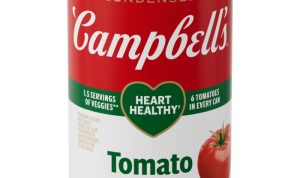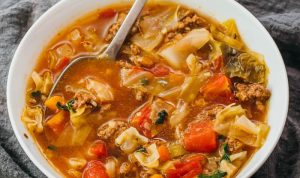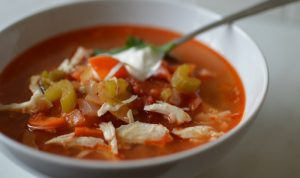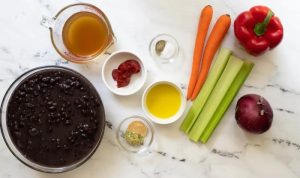Bean Soup: A Culinary Journey
Soup recipes with beans – From humble beginnings as a simple peasant fare to its current status as a globally cherished dish, bean soup boasts a rich and diverse history. Its versatility shines through countless regional variations, each reflecting unique cultural influences and culinary traditions. Beyond its deliciousness, bean soup offers a powerhouse of nutrients, making it a healthy and satisfying meal option for everyone.
Introduction to Bean Soups
Bean soups have been a staple food across various cultures for centuries. Ancient civilizations in Egypt, the Mediterranean, and the Americas utilized beans extensively in their culinary practices, often incorporating them into hearty soups. The nutritional value of beans, packed with protein, fiber, and essential vitamins and minerals, contributed to their widespread adoption as a fundamental part of many diets.
The adaptability of beans, lending themselves to a vast range of flavors and textures, makes them the perfect base for countless variations of soup.
Types of Bean Soups
The world of bean soup is incredibly diverse, with variations stemming from the type of bean used, regional culinary traditions, and available ingredients. Lentils, black beans, kidney beans, chickpeas, and many other types of beans all contribute their unique characteristics to the final product.
| Bean Type | Texture | Flavor Profile | Typical Ingredients |
|---|---|---|---|
| Black Bean | Rich and creamy | Earthy, slightly sweet | Onions, garlic, cumin, chili powder |
| Kidney Bean | Firm, slightly chewy | Savory, slightly tangy | Carrots, celery, tomatoes, herbs |
| Lentil | Tender, slightly earthy | Nutty, savory | Carrots, celery, onions, vegetable broth |
| Chickpea | Creamy, slightly nutty | Mildly sweet, savory | Garlic, lemon juice, spinach, cumin |
Recipe Variations: Flavor Profiles
The beauty of bean soup lies in its adaptability. By adjusting the ingredients, you can achieve a wide range of flavor profiles to suit any palate.
- Spicy: Achieved through the addition of chili peppers, chipotle powder, or other spices. The heat can be adjusted to preference. Key ingredients include onions, garlic, chili powder, cumin, and a flavorful broth.
- Creamy: Creaminess is often achieved by blending a portion of the soup or adding coconut milk, cream, or yogurt. Key ingredients might include tomatoes, onions, garlic, and a creamy base like coconut milk or heavy cream.
- Hearty: Hearty soups often include a variety of vegetables and grains, creating a substantial and filling meal. Key ingredients might include pasta, rice, potatoes, and a variety of seasonal vegetables.
Recipe Variations: Cooking Methods, Soup recipes with beans
Bean soup can be prepared using various cooking methods, each offering its own advantages.
- Stovetop: This method allows for close monitoring and adjustments to the soup’s consistency and flavor. A simple recipe involves sautéing onions, garlic, and vegetables, then adding beans, broth, and seasonings, simmering until tender.
- Slow Cooker: Ideal for a hands-off approach, the slow cooker allows the flavors to meld together beautifully over several hours. The process is similar to the stovetop method, but with longer cooking times and less frequent stirring.
- Pressure Cooker: This method significantly reduces cooking time, making it perfect for a quick weeknight meal. The pressure cooker’s high pressure and temperature quickly tenderize the beans and vegetables, resulting in a flavorful soup in a fraction of the time.
Recipe Variations: Dietary Needs

Source: tasteofhome.com
Hearty soup recipes with beans are a fantastic way to enjoy a comforting meal, offering both flavor and nutritional benefits. For a delicious twist, consider roasting your vegetables first; you’ll find inspiration for this technique in our collection of roasted veggie soup recipes , which can easily be adapted to incorporate beans for an even richer taste. Returning to bean soups, remember to experiment with different bean types and spices to create your own signature bowl.
Bean soup is easily adaptable to various dietary needs.
- Vegetarian: Simply ensure that all ingredients are vegetarian-friendly, using vegetable broth and avoiding any animal products.
- Vegan: Similar to vegetarian, but exclude any dairy products like cream or yogurt. Coconut milk can be used as a creamy alternative.
- Gluten-Free: Use gluten-free broth and avoid any ingredients containing gluten, such as some types of pasta or seasonings.
Serving Suggestions and Pairings
Bean soup is incredibly versatile and can be served in various ways.
- Main Course: Serve a hearty portion of soup as a complete meal, perhaps with a side of crusty bread for dipping.
- Side Dish: A smaller serving can complement a larger meal, adding depth and flavor to the overall dining experience.
- Beverage Pairings: A crisp white wine or a light beer pairs well with many bean soups. For spicier varieties, a refreshing limeade or iced tea might be a better choice.
Illustrative Examples: Visual Descriptions
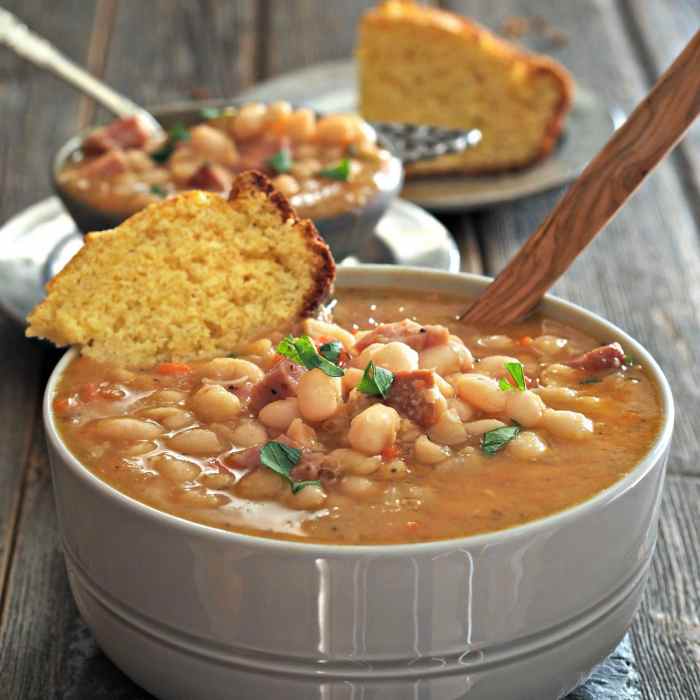
Source: simplysated.com
The visual appeal of bean soup can be just as diverse as its flavor profiles.
- Creamy Tomato Bean Soup: A vibrant red hue, with a smooth, velvety texture. Garnished with fresh basil or a swirl of cream, it exudes richness and warmth.
- Hearty Minestrone Soup: A colorful medley of vegetables, pasta, and beans, showcasing a variety of textures and colors. The visual appeal is one of abundance and wholesome goodness.
- Spicy Black Bean Soup: A deep, dark color, with a slightly chunky texture. The intensity of the color suggests the spiciness of the soup.
Recipe Storage and Reheating
Proper storage and reheating are crucial to maintaining the quality of your bean soup.
- Storage: Store leftover soup in airtight containers in the refrigerator for up to 3-4 days. Freezing is also a great option, extending the shelf life for several months.
- Reheating: Gently reheat the soup on the stovetop or in the microwave, avoiding boiling, which can alter the texture and flavor. Stir occasionally to prevent scorching.
Q&A: Soup Recipes With Beans
Can I freeze bean soup?
Totally! Let it cool completely, then store in airtight containers for up to 3 months.
What beans are best for beginners?
Kidney beans and chickpeas are super forgiving and yield great results.
How do I thicken my bean soup?
A simple roux (butter and flour) or a cornstarch slurry will do the trick.
Can I use canned beans?
Yep! Just rinse them well before adding them to your soup.


